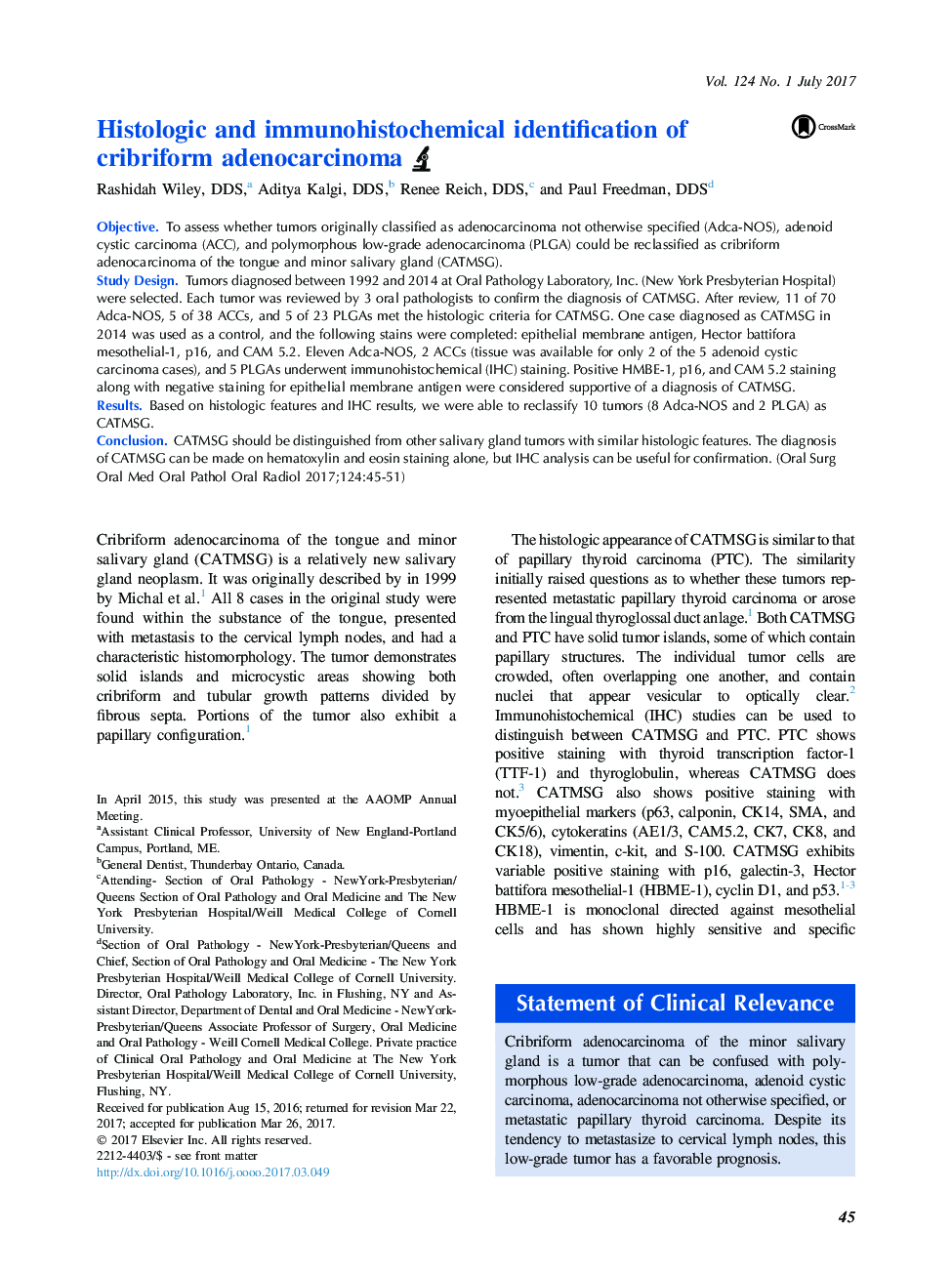| Article ID | Journal | Published Year | Pages | File Type |
|---|---|---|---|---|
| 5642935 | Oral Surgery, Oral Medicine, Oral Pathology and Oral Radiology | 2017 | 7 Pages |
ObjectiveTo assess whether tumors originally classified as adenocarcinoma not otherwise specified (Adca-NOS), adenoid cystic carcinoma (ACC), and polymorphous low-grade adenocarcinoma (PLGA) could be reclassified as cribriform adenocarcinoma of the tongue and minor salivary gland (CATMSG).Study DesignTumors diagnosed between 1992 and 2014 at Oral Pathology Laboratory, Inc. (New York Presbyterian Hospital) were selected. Each tumor was reviewed by 3 oral pathologists to confirm the diagnosis of CATMSG. After review, 11 of 70 Adca-NOS, 5 of 38 ACCs, and 5 of 23 PLGAs met the histologic criteria for CATMSG. One case diagnosed as CATMSG in 2014 was used as a control, and the following stains were completed: epithelial membrane antigen, Hector battifora mesothelial-1, p16, and CAM 5.2. Eleven Adca-NOS, 2 ACCs (tissue was available for only 2 of the 5 adenoid cystic carcinoma cases), and 5 PLGAs underwent immunohistochemical (IHC) staining. Positive HMBE-1, p16, and CAM 5.2 staining along with negative staining for epithelial membrane antigen were considered supportive of a diagnosis of CATMSG.ResultsBased on histologic features and IHC results, we were able to reclassify 10 tumors (8 Adca-NOS and 2 PLGA) as CATMSG.ConclusionCATMSG should be distinguished from other salivary gland tumors with similar histologic features. The diagnosis of CATMSG can be made on hematoxylin and eosin staining alone, but IHC analysis can be useful for confirmation.
